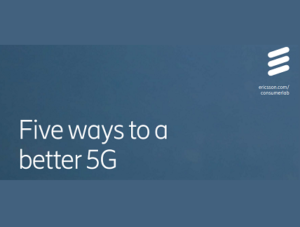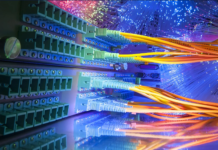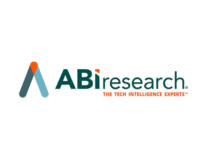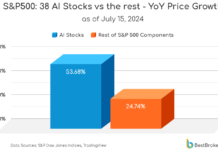
Ericsson ConsumerLab released the new report on the impact that 5G is already having on smartphone users worldwide and what they expect the technology to deliver in the future. Below are the key points:
5G users spend more time with cloud gaming and AR, while 20 percent have decreased usage of Wi-Fi on their phones at home and other locations after upgrading
Seven-in-ten 5G users expect more innovative services and apps, with indoor coverage rated two times more important than speed or battery life for early adopters
At least 40 million smartphone users in India could take up 5G in first year of 5G being made available.
Indoor coverage is one of the focus areas to emerge from the consumer research, with one-in-five 5G users already reducing Wi-Fi use on their phones indoors because of the benefits of 5G mobile connectivity.
The report – Five Ways to a Better 5G – is the result of the largest global 5G consumer study to date. Covering consumer sentiment and perception in 26 markets – including the US, China, South Korea, and the UK – the Ericsson ConsumerLab study methodology is representative of 1.3 billion smartphone users globally, including 220 million 5G subscribers.
The report explores key trends behind the adoption, use and perception of consumers with and towards 5G.
A key report finding reveals that even by the end of 2020, increased awareness of service and value benefits could have resulted in 22 percent more smartphone users with 5G-ready handsets upgrading to 5G subscriptions.
The report also highlights how 5G is already beginning to trigger new use behaviors. In addition to reducing Wi-Fi use, early adopter 5G users also spend an average of two hours more on cloud gaming and one hour more on augmented reality (AR) apps per week compared to 4G users.
However, while 5G users are satisfied with speed, about 70 percent are dissatisfied with the availability of innovative services and new apps. Consumers say they are willing to pay 20–30 percent more for 5G plans bundled with digital service use cases.
Covid-19 lockdowns and movement restrictions mean that the vast majority of 5G early adopters’ regular experiences with the technology have been indoors. As a result, early adopters indicate that indoor coverage is two times more important than speed or battery life in delivering satisfactory 5G experiences.
The report also outlines five ways for communications service providers (CSPs) to meet consumer expectations both in the immediate and longer terms, including:
- addressing the knowledge gap by educating and better marketing the value of 5G to consumers
- ensuring consistent quality of indoor and outdoor 5G coverage
- adapting to network requirements for new 5G services
- focusing on consumer intent to envision new 5G use cases
- accelerating availability of existing and new use cases through ecosystem partnerships
Nitin Bansal, Head of Ericsson India and Head of Network Solutions Ericsson South East Asia, Oceania & India, states, “Given that Indian Service Providers are preparing for 5G deployments, the Ericsson Consumer Lab study throws up some interesting consumer insights towards 5G that will help them encourage 5G adoption and meet consumer expectations“. The Study reveals some specific insights pertaining to customers in India :
At least 40 million smartphone users in India could take up 5G in first year of 5G being made available. Consumers in India are willing to pay 50 percent more for 5G plans with bundled digital services, compared to just 10 percent premium for 5G connectivity.
In fact, India has the biggest rise in intention to upgrade with 67% of users expressing an intention to take up 5G once it is available, an increase of 14 percentage points over 2019.
7 in 10 potential early adopters of 5G in India expect higher speeds than 4G while 6 in 10 expect pricing innovation from Communication Service Providers like 5G data sharing between family members or across devices.
5G ready smartphone users in India already spend more time on enhanced video and multiplayer mobile gaming. Consumers predict spending 7.5-8 hours/ week on XR apps by 2025.
The report cites FWA as a potential opportunity for 5G in India – A third of urban internet users find 5G home broadband to be extremely relevant and are even willing to give up their existing fixed broadband provider
Read the Ericsson ConsumerLab: Five Ways to a Better 5G report here.

















